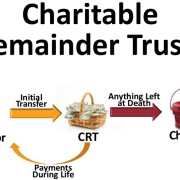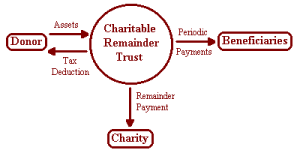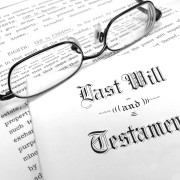Top Reasons For Needing a Trust
Top Reasons For Having a Trust
When creating an estate plan, the biggest mistake people make is thinking they need to be rich in order to have a trust – that is completely false. If you’re not Warren Buffet, you may still have other non-monetary reasons for creating a trust like asset protection, control, tax savings, Medicaid planning, and/or litigation and creditor protection. Even if your estate is worth less than $100,000, you may still be in an ideal situation to protect your nest egg and what you’ve spent a lifetime trying to build.
Although the situations of needing a trust are infinite, here are a few most common scenarios where you might benefit from creating a trust. You can also take a one-minute trust questionnaire here, to find out more specifically whether a trust is right for you.
Second Marriages
With divorce rates over fifty percent, the most common reason for creating a trust is where an individual is in their second marriage. In this scenario, there is nothing preventing the remaining spouse from disinheriting children from a prior marriage. Consider this example: Husband and Wife are in their second marriage. Wife has two kids from a prior marriage. Husband does not have kids except for step-children of current marriage. Wife passes away and leaves everything to Husband, remainder to two kids. Five years later, Husband meets a much younger Pamela Anderson and gets married. Husband creates a new estate plan naming Pamela Anderson as primary beneficiary of his estate, remainder to two step-children. Husband dies. Pamela then creates a new estate plan, disinheriting children.
Famous Last Words, “I would never get remarried!”
As you can see, this is a very typical example of where some level of control and strategy is needed. A trust in this example would solve the wife’s concerns entirely. Here, Wife could have created what is known as a QTIP trust. In a nut shell, the QTIP would give Husband income from Wife’s estate, plus five percent (5 %) of principal each year. When Husband dies, the estate MUST be passed to children and cannot be passed to anyone else. In essence, Wife is able to control her estate even after she’s passed. She has also ensured her children will never be cut out of the estate, even if it were the unintentional result of Husband. And if this were not a second marriage, a trust might still make sense for couples wanting to keep the estate within the family and avoid remarriage concerns.
Tax Savings for Children
Receiving an estate comes with taxable consequences. Although federal estate taxes are not normally at issue, gains on an inheritance can be quite high for children resulting in higher taxes. For example, a child receiving $100,000 in gains might be placed in a larger tax bracket of 39.9% because their inheritance placed them over the threshold. The simple solution here is for the child to receive their inheritance over time, opposed to a lump sum. The trust itself will pay income taxes on gains and the children can enjoy a stream of payments over time.
Asset Protection
Depending on the type of trust created, a trust can protect both the creator (you) and beneficiary of trust. The most common asset protection trust is used for children instead of the creator. This type of trust is known as a “revocable living trust.” This type of trust gets its name because the creator can revoke, change, or modify, the trust at any time during his/her lifetime. After the creator passes away, the estate is placed in an “irrevocable trust,” where the trust now cannot be changed. In other words, the terms you’ve created in trust cannot be changed after you pass away. Usually the trust maker will set forth terms that would pay children and/or beneficiaries payments over their lifetime. So long as there is discretion given to the trustee (usually a trusted family member or attorney) the money remaining in trust cannot be attacked by creditors or litigation. In other words, if a child ends up in a lawsuit, the trustee can cease payments to the child so that the money is protected from the lawsuit. The same outcome would apply if the child ends up in bankruptcy or owes creditors.
Divorce
It’s well known that in a divorce, all assets are split 50/50. It doesn’t matter whether one spouse cheated or did something horrible to the other. Ohio courts will divide all assets accumulated during the marriage 50/50, including an inheritance. So, if your child inherits $1 million dollars from your estate, and then subsequently gets divorced, the ex-spouse will receive $500,000 of your money. Using the same example above, you can protect your child’s inheritance by creating a revocable living trust. Here again, the trustee can turn off the income stream to prevent a disgruntled son-in-law from receiving his unearned share.
Control
No matter how they’re raised, it’s not uncommon for children to be irresponsible or need at least some level of guidance. With a trust you can create payment terms so that children don’t blow their inheritance on impulsive purchases. For example, many trusts stipulate that children may only use funds for “health, maintenance, education, and support” until they reach the age of X, thereafter payments made over time to protect against divorce, litigation, and creditors. This method is very common and puts parents at ease even with responsible children.
You don’t have to be rich to protect what you’ve spent a lifetime trying to build. To find out whether a trust is right for your family, take the one-minute trust questionnaire at www.DoIneedaTrust.com. There are a number of different trusts available and the choices are infinite. With every scenario, careful consideration of every trust planning strategy should be considered for the maximum asset protection and tax savings. For more information, you can contact Dan A. Baron of Baron Law LLC at 216-573-3723. Baron Law LLC is a Cleveland, Ohio area law firm focusing on estate planning and elder law. Dan can also be reached at dan@baronlawcleveland.com









